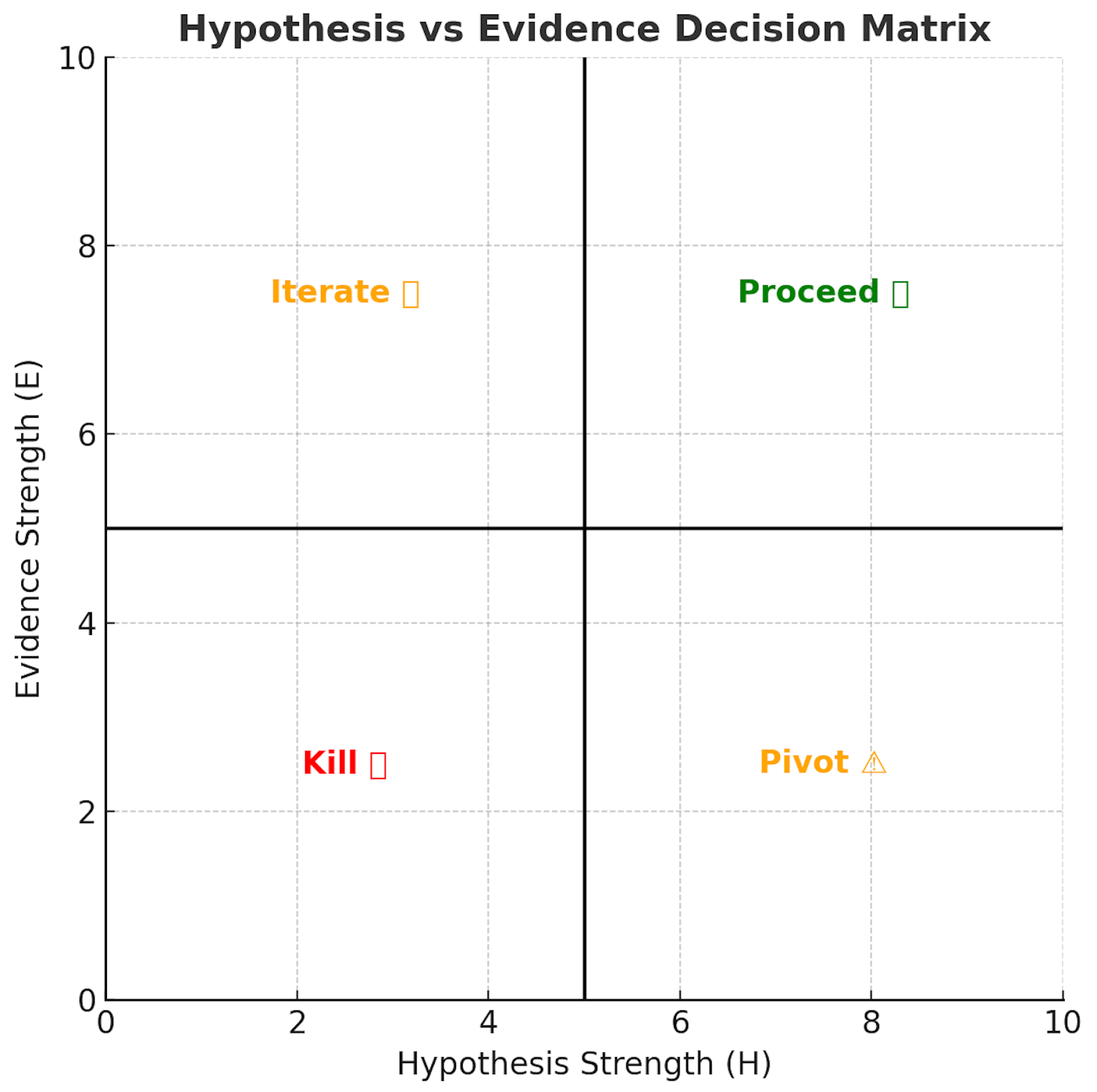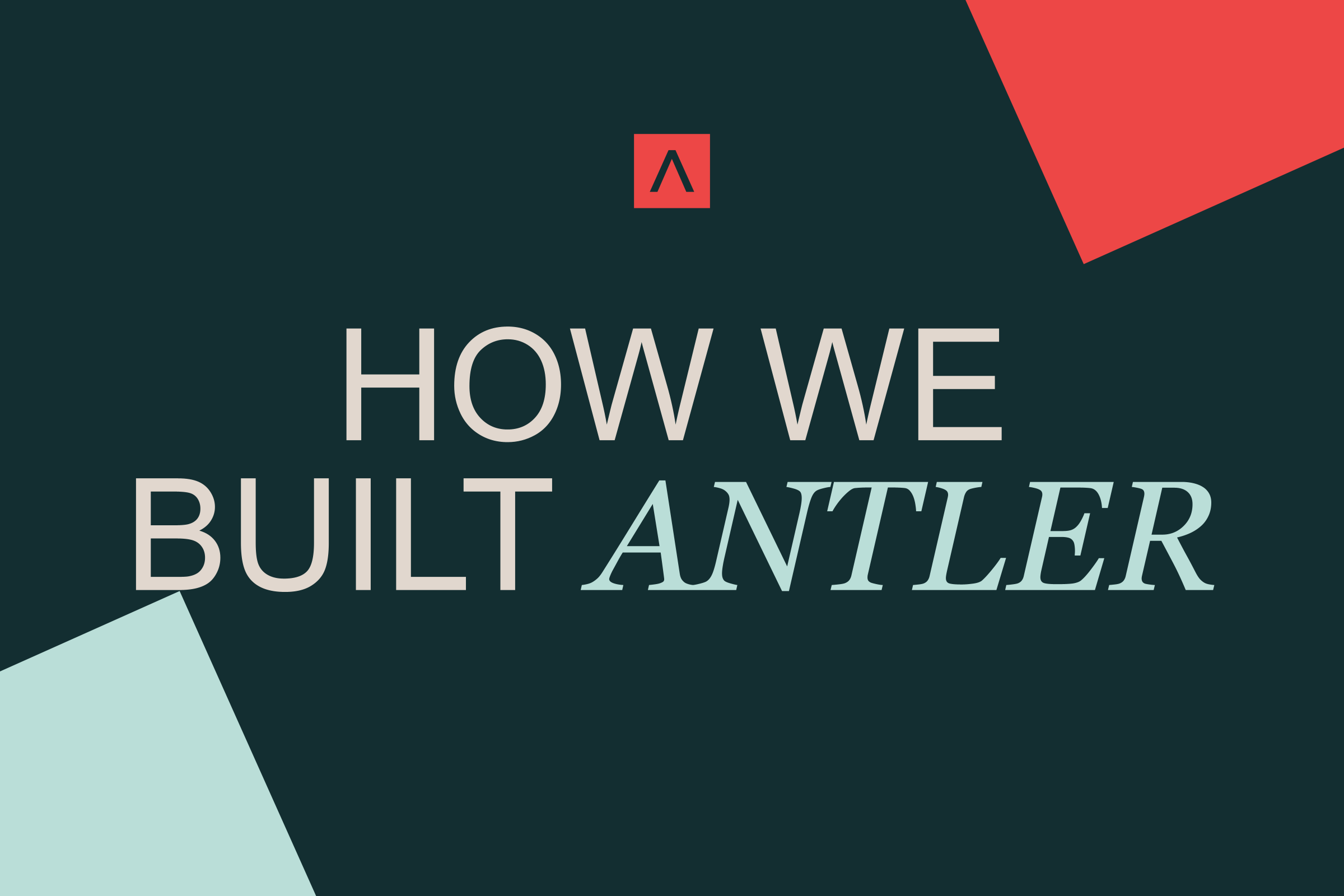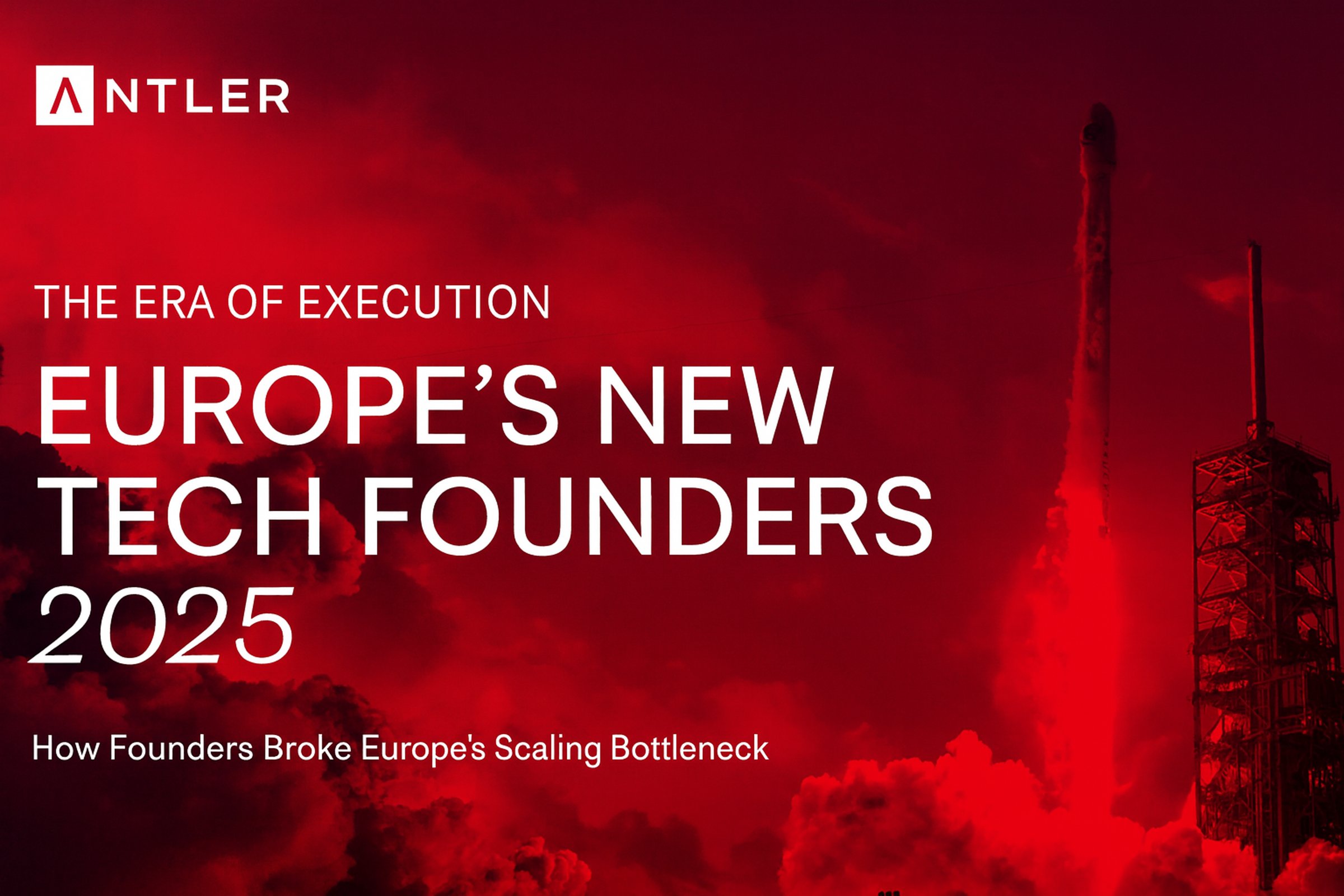Why This Matters
At Antler, we back founders at inception — often before they even have a product. The hard part isn’t evaluating traction or revenue. It’s deciding whether the problem itself has venture-scale potential.
Traditional tools don’t quite cut it:
- Checklists like TAM, “10x better,” or vitamins vs painkillers are useful prompts, but too binary and rarely tied to proof.
- Stage maps (discovery → validation → PMF → scale) provide a journey, but not a crisp decision point for when to double down or when to stop.
We needed something more practical. That’s why we built the Ten Gates Framework: a structured way to test problems for venture-scale potential and make clear calls — Proceed, Iterate, Pivot, or Kill.
Why This Is Interesting
- Problem-first, not solution-first
Most startups fail not because they built the wrong product, but because they solved the wrong problem. The Ten Gates forces a problem-first discipline. - Hypothesis vs Evidence
Each gate is tested twice:- H-score: If this assumption were true, would it imply venture scale?
- E-score: What proof do you actually have?
This distinction avoids mistaking a neat hypothesis for reality — or ignoring strong evidence that points to a different opportunity.
- H-score: If this assumption were true, would it imply venture scale?
- Thresholds + Weighted Scoring
The first 4 gates — the Problem Core — are deal-breakers. Each must score ≥7 on Hypothesis. The next 6 gates — the Scale Levers — are weighted to create a 100-point index, allowing nuanced comparisons. - Decisions, not debates
- H high + E high → ✅ Proceed
- H high + E low → 🔄 Iterate (design tests)
- H low + E high → ⚠️ Pivot (follow the evidence)
- H low + E low → ❌ Kill
No endless hand-waving — just a clear next step.
- H high + E high → ✅ Proceed

- Catching outliers
Airbnb, Stripe, OpenAI — they wouldn’t have passed the Ten Gates early on. That’s why we also built the Exploratory Gates, a complementary framework for contrarian or market-creating ideas.
The Ten Gates

Phase 1: The Problem Core (deal-breakers)
- Problem Intensity — Who exactly has the problem? How painful, frequent, costly is it? What happens if ignored? Do they know and care they have the problem?
- Economic Buyer — Who pays? Which budget line? How long to approve? Are they able to buy right now?
- Market Size — Is there a credible path to £100m+ ARR in 7–10 years? How many ICPs exist? What share can you win?
- Willingness to Pay / ROI — What value do you create, and do buyers agree? Do they have substantial budget to solve the problem? Are they willing to buy right now?
(All must score ≥7 on Hypothesis before you move on.)
Phase 2: The Scale Levers (weighted)
- Must-Have Resonance — Would users be very disappointed if it disappeared?
- GTM Fit & Unit Economics — Can you reach ICPs repeatably at viable CAC/LTV?
- Defensibility Design — What moat seeds exist? Do they want to buy from you?
- Retention & Expansion — Do customers stay and expand? Will they will be paying a year from now?
- Timing & Catalysts — Why now?
- Capital Intensity & Liquidity — Can it scale efficiently with VC money?
Scoring:
- ≥75 total + all Problem Core ≥7 → Proceed
- 60–74 → Iterate
- <60 or Core failure → Pivot/Kill
A Worked Example
Let’s take a hypothetical startup: LexiAI, an AI assistant for property conveyancing lawyers.
Gate 1: Problem Intensity
- H = 9 (lawyers spend weeks chasing documents, a clear bottleneck).
- E = 5 (6 structured interviews confirm pain, but limited sample).
- Decision = 🔄 Iterate → Need more interviews.
Gate 2: Economic Buyer
- H = 8 (law firm managing partners approve tech that reduces case time).
- E = 6 (two firms said they’d pay, but no signed pilots yet).
- Decision = 🔄 Iterate → Run 3–5 pilot contracts.
Gate 3: Market Size
- H = 8 (50k firms × £10k ARPA × 20% penetration = £100m ARR).
- E = 7 (bottom-up model triangulated with UK Law Society data).
- Decision = ✅ Proceed.
Gate 4: ROI / Willingness to Pay
- H = 9 (tool saves £50k/year in billable time; priced at £10k/year).
- E = 8 (lawyers in pilots accept pricing).
- Decision = ✅ Proceed.
Scale Levers snapshot:
- Gate 5: Must-have → H=7, E=4 (still “nice-to-have” for some).
- Gate 6: GTM → H=6, E=3 (channel unproven).
- Gate 7: Defensibility → H=6, E=2 (no moat yet).
- Gate 8: Retention → H=7, E=3 (repeat usage unproven).
- Gate 9: Timing → H=8, E=6 (regulatory push toward automation).
- Gate 10: Capital → H=8, E=7 (SaaS-like model, good margins).
Overall Score = 68 → 🔄 Iterate.
LexiAI has a strong problem core, but must prove GTM, must-have resonance, and retention before it’s venture-backable.
This is exactly the kind of clarity founders and investors need: don’t kill it — but don’t fundraise for scale until those weak gates are strengthened.
The Exploratory Gates (for outliers)
Some startups won’t pass the Problem Core, but still matter. For frontier or contrarian ideas, we score instead on:
- Market Creation Potential
- Contrarian Thesis
- Timing Inflection
- Compounding Moats
- Option Value
Here, one or two very strong gates can justify keeping the idea alive as an option play, even if others are weak.
Example: OpenAI in 2015 would have “failed” Problem Core (no clear buyer, no TAM, no ROI). But on Exploratory Gates:
- Contrarian Thesis = 10 (“transformer models scale with compute”).
- Timing = 9 (GPUs + deep learning breakthroughs).
- Moat Potential = 10 (talent + compute lock-in).
That was enough to justify it as a long-horizon bet.

Why We’re Sharing This
We use the Ten Gates internally at Antler to coach founders and evaluate problems. But we’re publishing it because:
- For founders: It’s a way to test problems before burning cycles building.
- For investors: It’s a common language for problem quality.
- For the ecosystem: It acknowledges that outliers often look weird — and shows how to spot signals without killing them too early.
At Antler, we don’t just want to back founders. We want to give them tools to test, refine, and prove their ideas at speed. The Ten Gates helps separate the promising from the non-scalable — and the Exploratory Gates ensure we don’t miss the next Airbnb or OpenAI.
Try our Ten Gates GPT: A founder-friendly coach that guides you through the Ten Gates and Exploratory Gates frameworks to test whether your idea has venture-scale potential: https://chatgpt.com/g/g-68de1a31333481919d32d1bdec3d71a5-problems-the-ten-gate-framework


.png)




.png)

